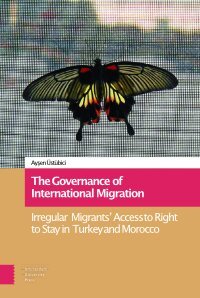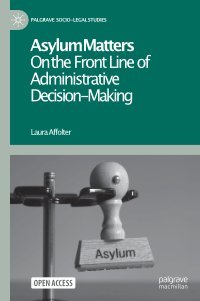By Ariel G. Ruiz Soto, Rodrigo Dominguez-Villegas, Luis Argueta and Randy Capps
As U.S. deportations to Mexico continue at substantial levels and the numbers returned by both the U.S. and Mexican governments to El Salvador, Guatemala, and Honduras are increasing, it has become more urgent for countries in the region to develop successful reception and reintegration programs that meet the diverse needs of returning migrants.
Between fiscal years 2012-18, the United States carried out approximately 1.8 million repatriations of Mexican migrants, and the United States and Mexico together accomplished 1.4 million returns of migrants from the three Northern Triangle countries.
Drawing on fieldwork and interviews with government officials, researchers, representatives of civil-society and international organizations, as well as returning migrants, this report highlights promising reintegration strategies and pressing challenges. Mexico and the three Northern Triangle countries exhibit different levels of capacity and degrees of implementation in their reception and reintegration programs. While most deported migrants now receive basic reception services, their access to reintegration services is somewhat more mixed. Among the challenges: Difficulty obtaining the official ID that allows returning migrants to access these services, limited awareness and geographic distribution of services, difficulty matching returning migrants’ skills with labor-market needs, and barriers to reintegration posed by social stigmatization and employment discrimination.
The report offers a range of recommendations to governments and others, including: Prepare migrants for reintegration prior to their return, even before deportation; issue primary ID documents from abroad or upon reception; and ensure reintegration services tap into returning migrants' cultural roots. Improving reception and reintegration services represents a long-term investment for both destination and origin countries, the authors conclude, holding the potential to reduce re-migration while enabling countries of origin to benefit from the skills and assets migrants have acquired abroad.
Washington, DC: Migration Policy Institute, 2019. 43p.
https://www.migrationpolicy.org/sites/default/files/publications/MPI-ReceptionReintegration-FinalWeb.pdf
At the Breaking Point: Rethinking the U.S. Immigration Court System
By Muzaffar Chishti, Doris Meissner, Stephen Yale-Loehr, Kathleen Bush-Joseph and Christopher Levesque
With a backlog of nearly 2 million cases, the U.S. immigration court system is in crisis. Many cases now take years to adjudicate, with asylum seekers, for example, waiting four years on average for their initial hearing and longer for a final decision. Serious concerns have also been raised about the quality of court decisions.
These twin issues of caseload quantity and decision quality have wide-ranging roots, from long-standing operational challenges in the courts to new crises in the Americas that have intensified humanitarian protection needs and other migration pressures. The courts' dysfunction has had severe knock-on effects for other parts of the nation’s immigration infrastructure, including notably the immigration enforcement and asylum systems.
This report takes stock of the many challenges facing the immigration courts and outlines recommendations that would advance the goal of delivering decisions that are both timely and fair. It explores issues including court caseload and personnel levels, docket management strategies, the use of technology in the courts, and access to representation. Importantly, the report focuses on changes that can be accomplished administratively—a necessity in a time when Congress has proven itself unlikely to tackle significant immigration matters.
Washington, DC:Migration Policy Institute, 2023. 51p.
https://www.migrationpolicy.org/sites/default/files/publications/mpi-courts-report-2023_final.pdf
Betting on Legality: Latin American and Caribbean Responses to the Venezuelan Displacement Crisis
By Luciana Gandini and Andrew Selee
More than half, and as many as two-thirds, of the estimated 6.4 million displaced Venezuelans who have settled in Latin America and the Caribbean since 2016 have been granted legal status in their host country. Most of the receiving countries in the region have responded with pragmatic measures that offer some form of legal status as well as the right to access the labor market, basic education, and emergency health care. The measures implemented are uneven and often not fully institutionalized, but they have been surprisingly generalized for a region with limited experience with large-scale immigration.
This report explores the response to Venezuelan displacement in the 15 principal host countries in Latin America and the Caribbean between 2016 and 2022. It examines the reach of different mechanisms for providing legal status and humanitarian protection—asylum systems, mobility and residence agreements, regular visas, and regularization campaigns that offer temporary status—and offers estimates of the share of Venezuelans in each country who have obtained legal status.
The report also considers the trend of governments coupling measures to provide legal status with new visa requirements that have made it increasingly difficult for more Venezuelans to arrive, pushing some into irregular migration channels. Finally, the report looks at variations in Venezuelans’ access to education and health care across the 15 countries.
Washington, DC: Migration Policy Institute, 2023. 55p.
https://www.migrationpolicy.org/sites/default/files/publications/mpi-venezuelans-legal-status-2023_eng_final.pdf
Migration Narratives in Northern Central America: How Competing Stories Shape Policy and Public Opinion in Guatemala, Honduras, and El Salvador
By Ariel G. Ruiz Soto, Natalia Banulescu-Bogdan, Aaron Clark-Ginsberg, Alejandra Lopez and Alejandro Vélez Salas
The stories told within a society about migration and migrants paint a rich picture of how its members view the opportunities and challenges associated with the movement of people, and through what lenses. These migration narratives both inform policymaking and shape the public’s reaction to government policy, affecting the policies’ chances of achieving their goals.
While El Salvador, Guatemala, and Honduras are primarily known for emigration to the United States and Mexico, these northern Central American countries have seen notable changes in migration trends in recent years. The number of migrants from South America and the Caribbean who transit through these countries on their way north has increased, as has the number of Central Americans returning to their countries of origin.
This report presents the findings of research conducted by the Migration Policy Institute, RAND Corporation, Metropolitan Group, and National Immigration Forum, comparing migration narratives within El Salvador, Guatemala, and Honduras—as well as a selection of migration narratives from Mexico and the United States that relate to Central America—over the 2018–22 period. The study explores how these narratives about emigration, transit migration, return, and other issues intersect, how they contradict or compound each other, and how they influence critical policy debates and decisions in the region.
Washington, DC: Migration Policy Institute, 2023. 49p.
https://www.migrationpolicy.org/sites/default/files/publications/CentAm-MigrationNarratives-2023_final.pdf
Inhumane and Counterproductive: Asylum Ban Inflicts Mounting Harm
By
Christina Asencio
Rebecca Gendelman
Five months after the Biden administration initiated its new bar on asylum, the policy continues to strand vulnerable people in places where they are targets of widespread kidnapping, torture, and violent assaults. People seeking asylum are forced to risk their lives waiting in danger in Mexico for one of the limited CBP One appointments or risk suffering the ban’s punitive asylum denials or wrongful returns to harm and persecution if they attempt to seek protection at a port of entry or cross outside ports of entry without a CBP One appointment. The targeting of migrants and asylum seekers waiting for these appointments has risen sharply recently, driving many people to cross the border in urgent search of safety. Humanitarian workers assisting asylum seekers forced to wait in Mexico are also facing alarming—and increasing—risks as well.
This harmful bar on asylum (the “asylum ban”) is a new iteration of similar transit and entry bans promulgated by the Trump administration that federal courts repeatedly struck down because they violated U.S. law. A federal district court ruled in July that the Biden asylum ban is unlawful, but it remains in place while on appeal. The asylum ban renders nearly all asylum seekers who traveled through another country on their way to the U.S. southern border ineligible for asylum due to their transit routes and/or manner of entry unless they (1) applied for and were denied asylum in one of those countries (regardless of their safety there), or (2) managed to secure one of the asylum ban’s limited “pre-scheduled” appointments to enter at an official port of entry. To try to get a U.S. port of entry appointment, people seeking asylum (as well as other migrants who are not seeking asylum) are left to struggle to obtain an appointment via CBP One, a smartphone app that operates much like a daily lottery and is plagued by deficiencies that impede equitable access.
Not only does the asylum ban violate both U.S. and international law, but it has generated strong and diverse opposition from faith groups, Holocaust survivors, major unions, civil rights organizations, members of the president’s political party and other key Biden administration allies. President Biden should honor his campaign promise to end such restrictions by bringing this harmful policy—which his administration has pledged is only temporary—to its end now. Every day that it is left in place, it endangers refugees’ lives and subverts refugee law.
Instead, the Biden administration should double down on some of the effective, humane, and legal policies that it has already initiated or announced, and reject those that punish, ban, and block people seeking asylum, contrary to core tenets of international refugee protection. Key steps include to: quickly ramp up plans to expand regional refugee resettlement, strengthen the administration’s pivotal parole initiatives, increase critical aid to address regional protection gaps driving many to flee north, urgently increase support for safe shelter and other dire needs of people waiting in Mexico, uphold fundamental human rights in regional migration coordination, maximize access to asylum at ports of entry, properly staff asylum and immigration court adjudications, and improve and restart use of the Biden administration’s new asylum processing rule to help adjudicate a greater number of asylum cases more efficiently.
New York: Human Rights First, 2023. 67p.
https://humanrightsfirst.org/wp-content/uploads/2023/10/Inhumane-and-Counterproductive-final-report.pdf
Digital Border Governance: A Human Rights Based Approach
By Lorna McGregor and Petra Molnar
In an era where digital technologies are increasingly integrated into migration processes, these technologies are reshaping border governance in a manner that impacts the human rights of people on the move and communities worldwide. As we navigate these evolving dynamics, it becomes paramount to address the potential harms the use of digital technologies poses to human rights, while also harnessing the opportunities they offer to facilitate safe and dignified migration. This collaborative study, conducted by the UN Human Rights Office and the University of Essex, analyses the human rights implications of specific border technologies. It provides recommendations for States and stakeholders on how to take a human rights-based approach in ensuring the use of digital technologies at borders aligns with international human rights law and standards. The study draws from a collective body of expertise, research, and evidence, as well as extensive interviews and collaborative meetings with experts.
United Nations High Commissioner for Human Rights , 2023. 26p.













